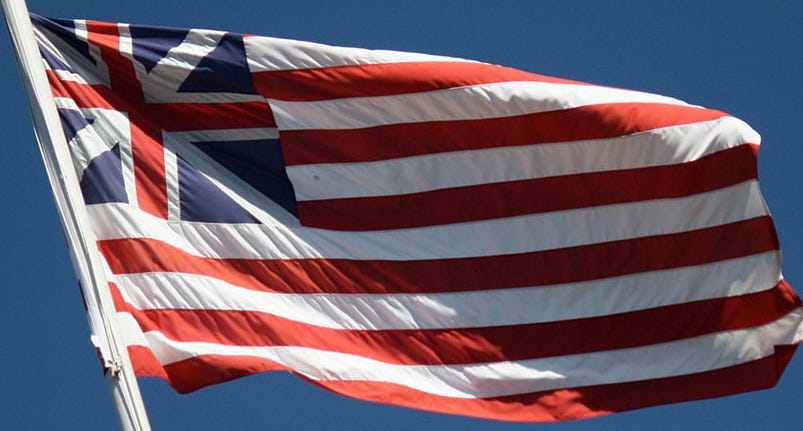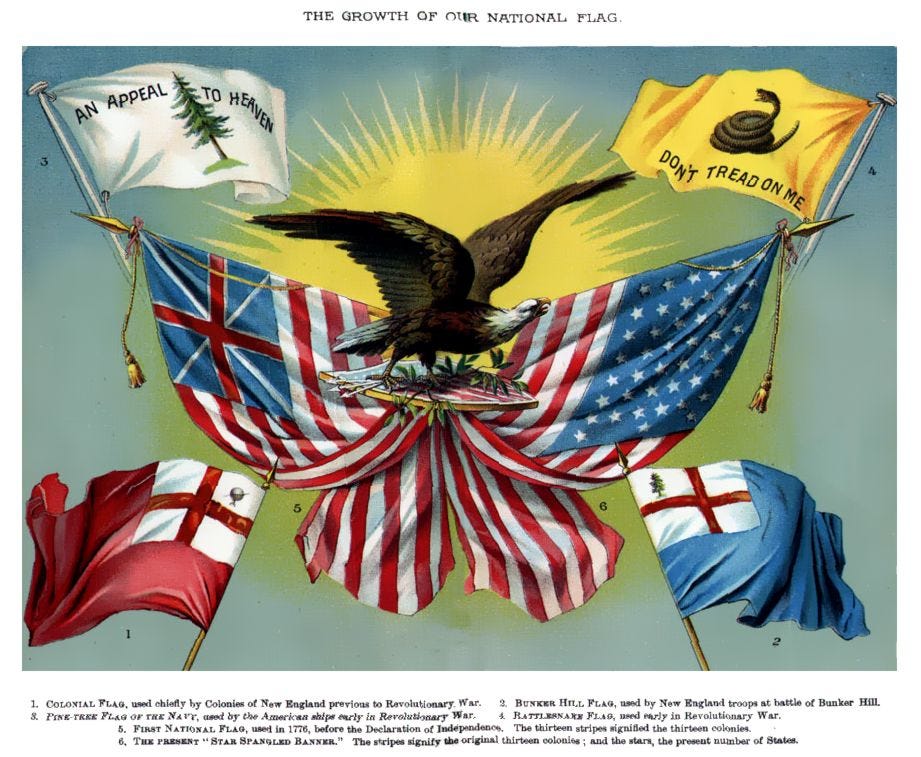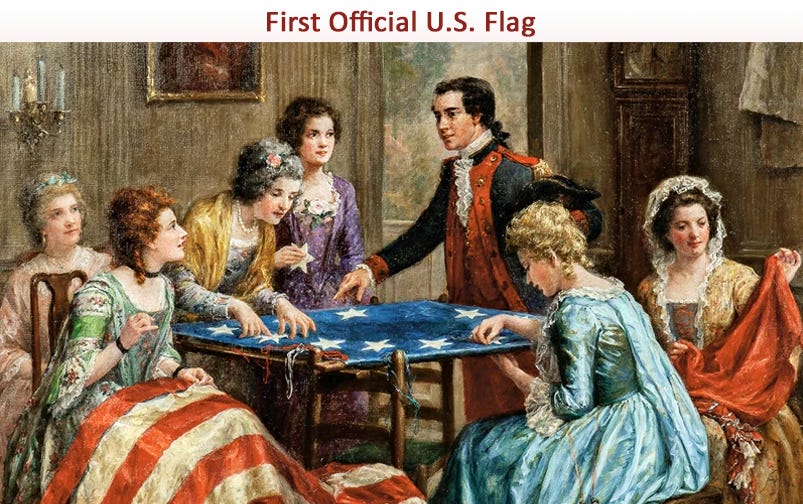Flag Day, June 14: What does the Flag mean?
The founders gave the U. S. flag a very specific meaning. What is it?

After the Continental Army’s victories at Trenton and Princeton in Dec. 1776 and Jan. 1777, General George Washington and his men rested and regrouped. This gave Washington an opportunity to focus on something that his army and the American people needed: a new flag.
Washington had learned the hard way that their unofficial flag, the Grand Union flag, was too British. When he had flown the Grand Union flag as he successfully had driven the British military from Boston in March 1776, the British had thought that he was flying a British flag. Why? Despite its 13 stripes, the Grand Union Flag featured the British flag in the upper left quadrant.
This confusion exposed a need for a new flag that distinguished America in its new, non-British identity.


Washington discussed the flag matter with members of the Continental Congress and others. Months later, the Continental Congress passed a resolution on June 14, 1777, describing the first official flag of the United States of America.
“In CONGRESS, June 14, 1777. Resolved, That the FLAG of the United States be THIRTEEN STRIPES alternate red and white; that the union be THIRTEEN STARS white in a blue field, representing a new constellation.”[i] The public first learned about it when the Pennsylvania Evening Post reported on Aug. 30, 1777, the minutes from Congress’s June 14 meeting.
Gone were the Union Jack and the Grand Union flags. Gone, too, were the thirteen British colonies. Replacing them were America’s new thirteen states, which both the flag’s stripes and stars represented. In this way, the new flag reflected the Declaration of Independence, which Congress had passed nearly a year earlier on July 4, 1776.
These states were more than just separate entities. Whereas the colonies had often acted as separate nation states disjointed from each other, these new united states were united into one nation. The flag’s purpose was to symbolize not just a new nation, but a united nation.
The meaning of the first official United States flag had nothing to do with skin color, sex, class, race, ethnicity, religion or any other distinction. Congress intended for the flag of the United States to mean one thing: UNION.
Through a new constellation, the white stars on the blue background depicted this unity. When the stars were arranged in a circle, they also conveyed the equality of that union because no state was more important than another.
The new U.S. flag embodied the sentiment of Patrick Henry.
“The distinctions between Virginians, Pennsylvanians, New Yorkers and New Englanders, are no more. I am not a Virginian, but an American,” Patrick Henry declared.
Unfortunately, the Continental Congress was too busy prosecuting the business of the war to provide more information in their journal record about the flag on June 14, 1777. We know that integrity was on their minds that day. Their record shows that they fired a ship captain of poor character and replaced with him with a new upstart: Captain John Paul Jones. He later became America’s first naval war hero because he literally wouldn’t surrender his ship’s colors—the flag.
On that first flag day, Congress didn’t explain the meaning of the colors, red, white and blue. But in the days and weeks ahead, Congress would come to know the meaning of these colors through the valor and perseverance of George Washington’s army and others who contributed to the cause of liberty.
Near the end of the war on June 20, 1782, Congress defined the meaning and virtues behind the nation’s colors, which will be the topic of an upcoming substack on June 20, along with a substack about why we call this flag the Betsy Ross flag.
[i] “In Congress,” Pennsylvania Evening Post, Aug. 30, 1777, (Philadelphia, PA) 453, Genealogy Bank, accessed Jan. 22, 2022, https://www.genealogybank.com/nbshare/AC01111014165929282711643488439




